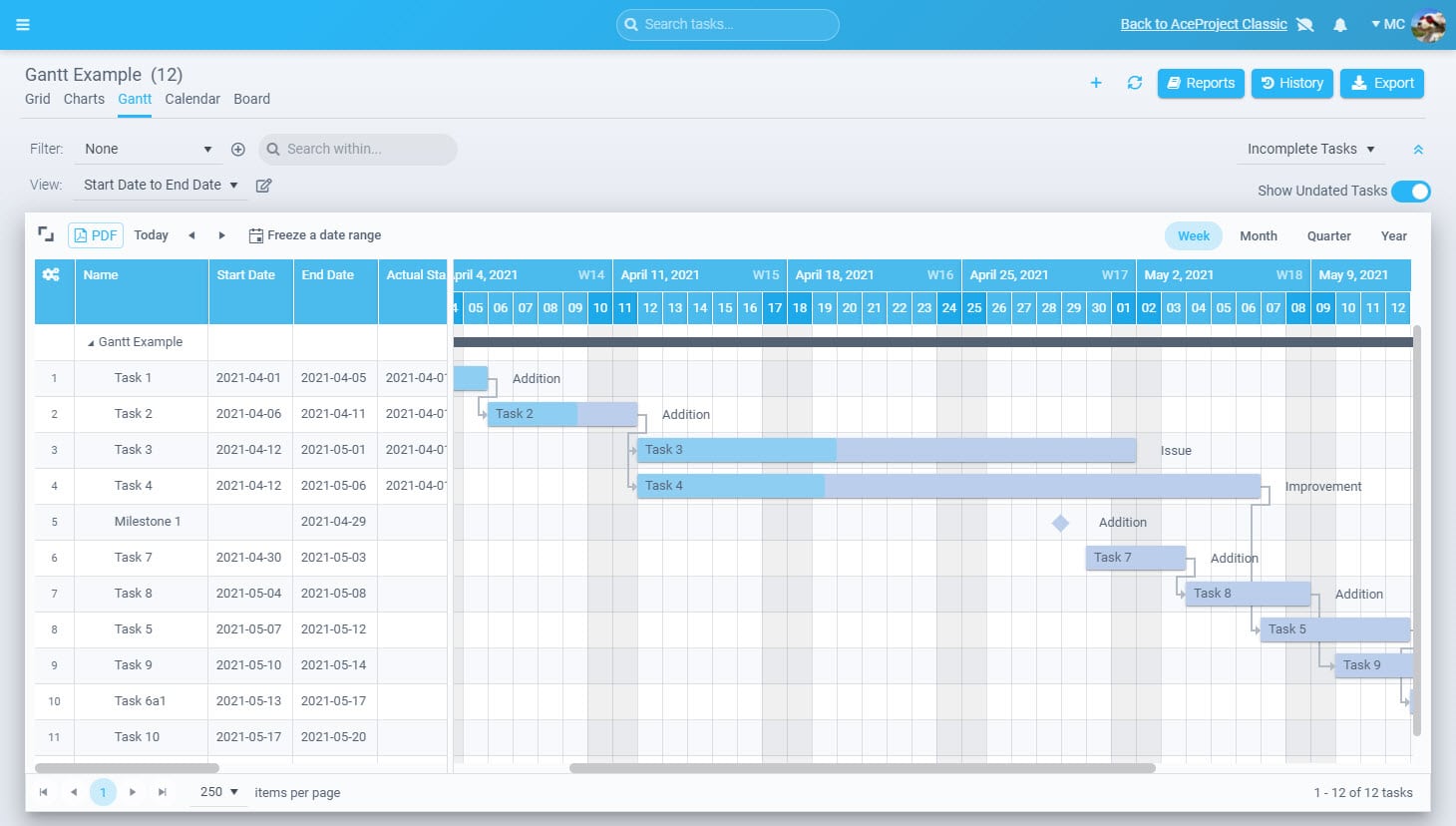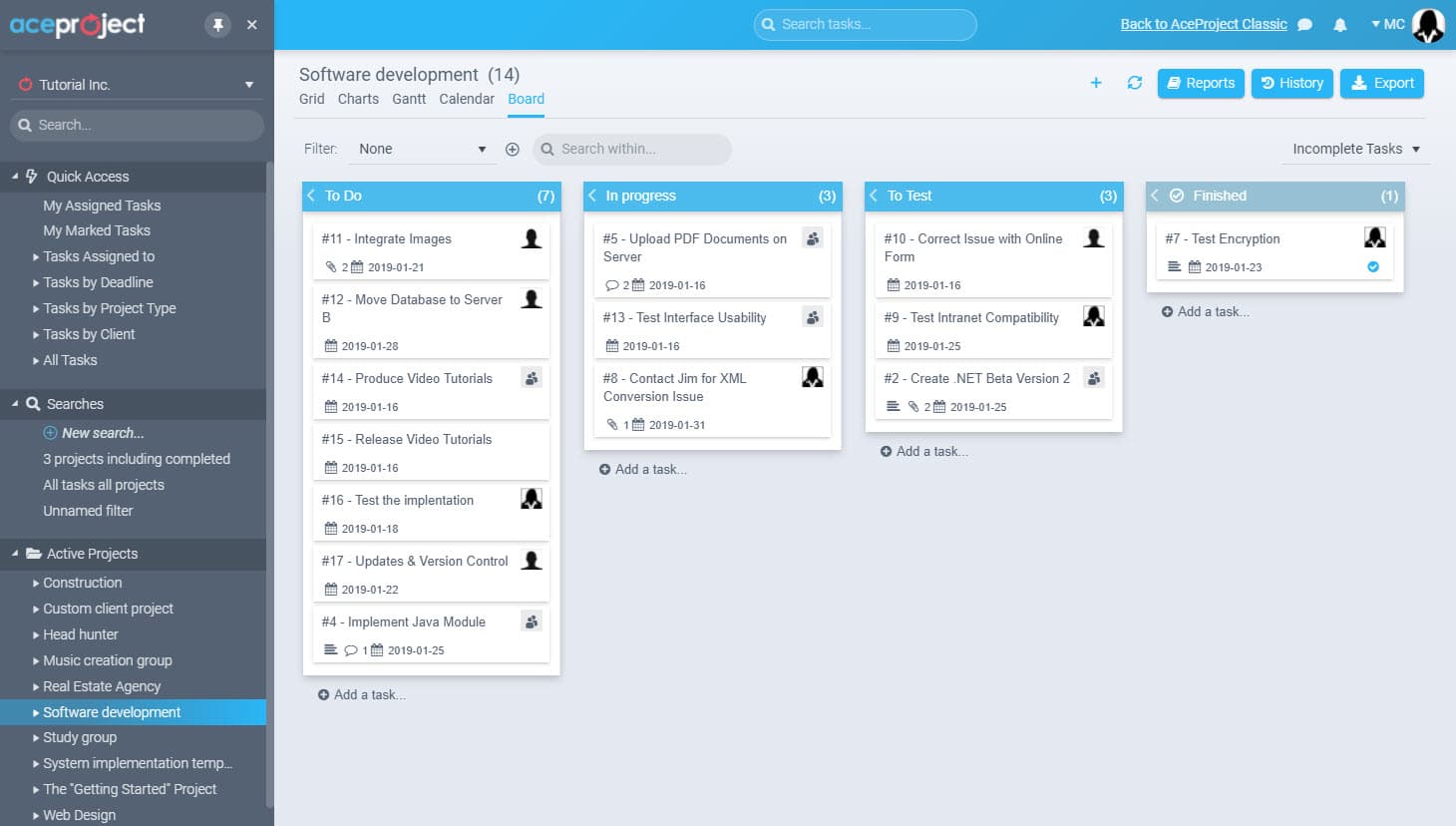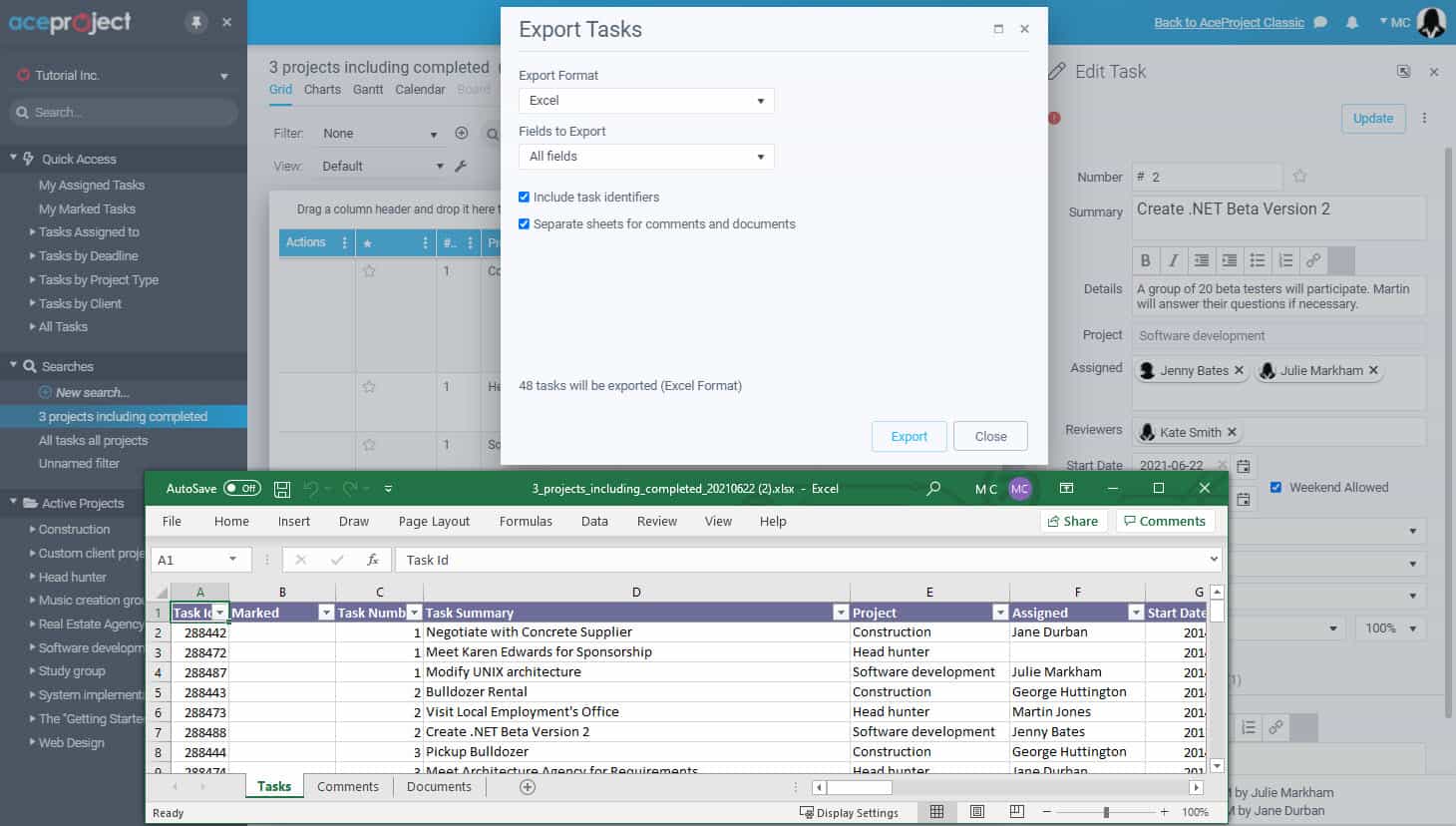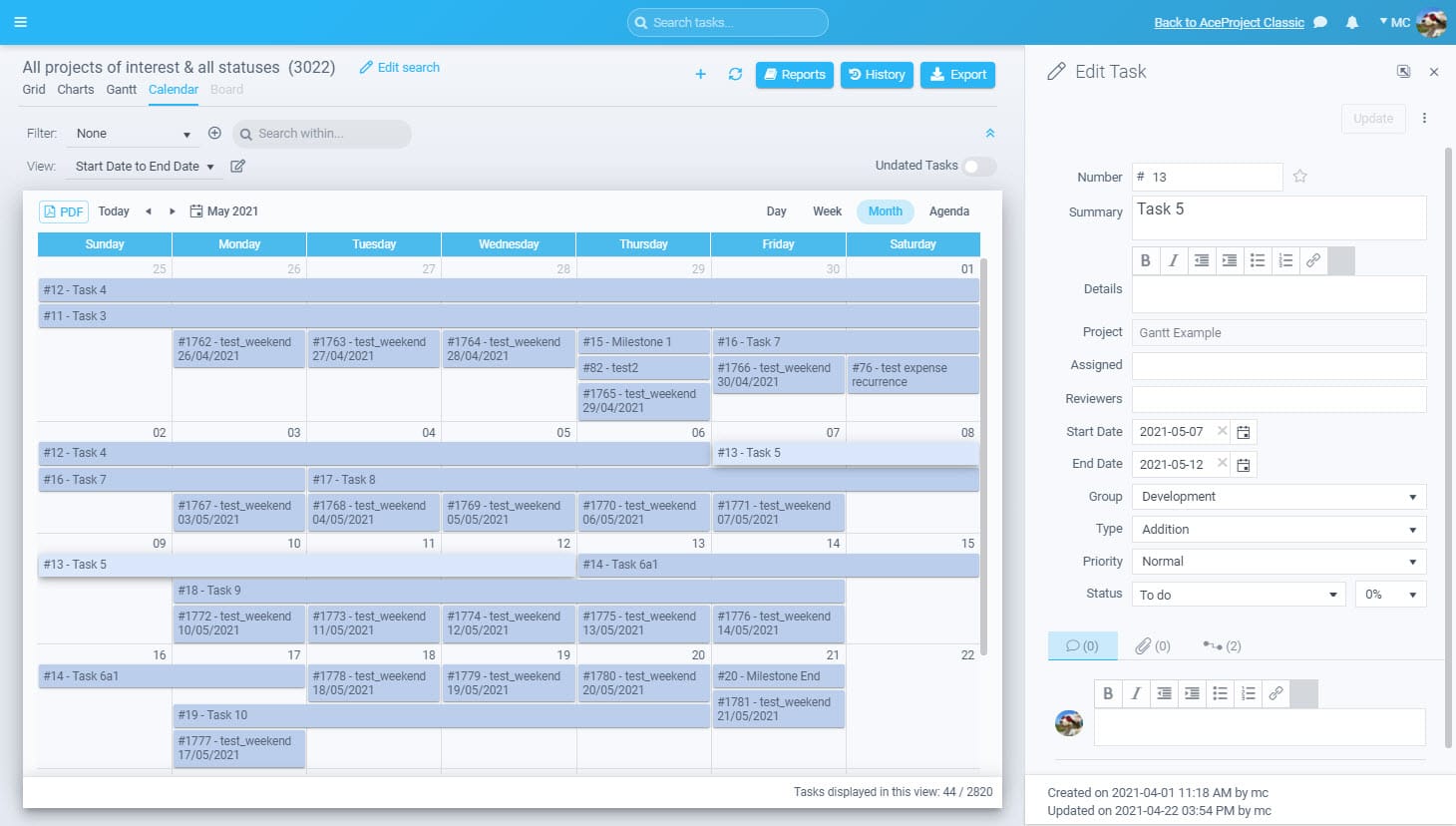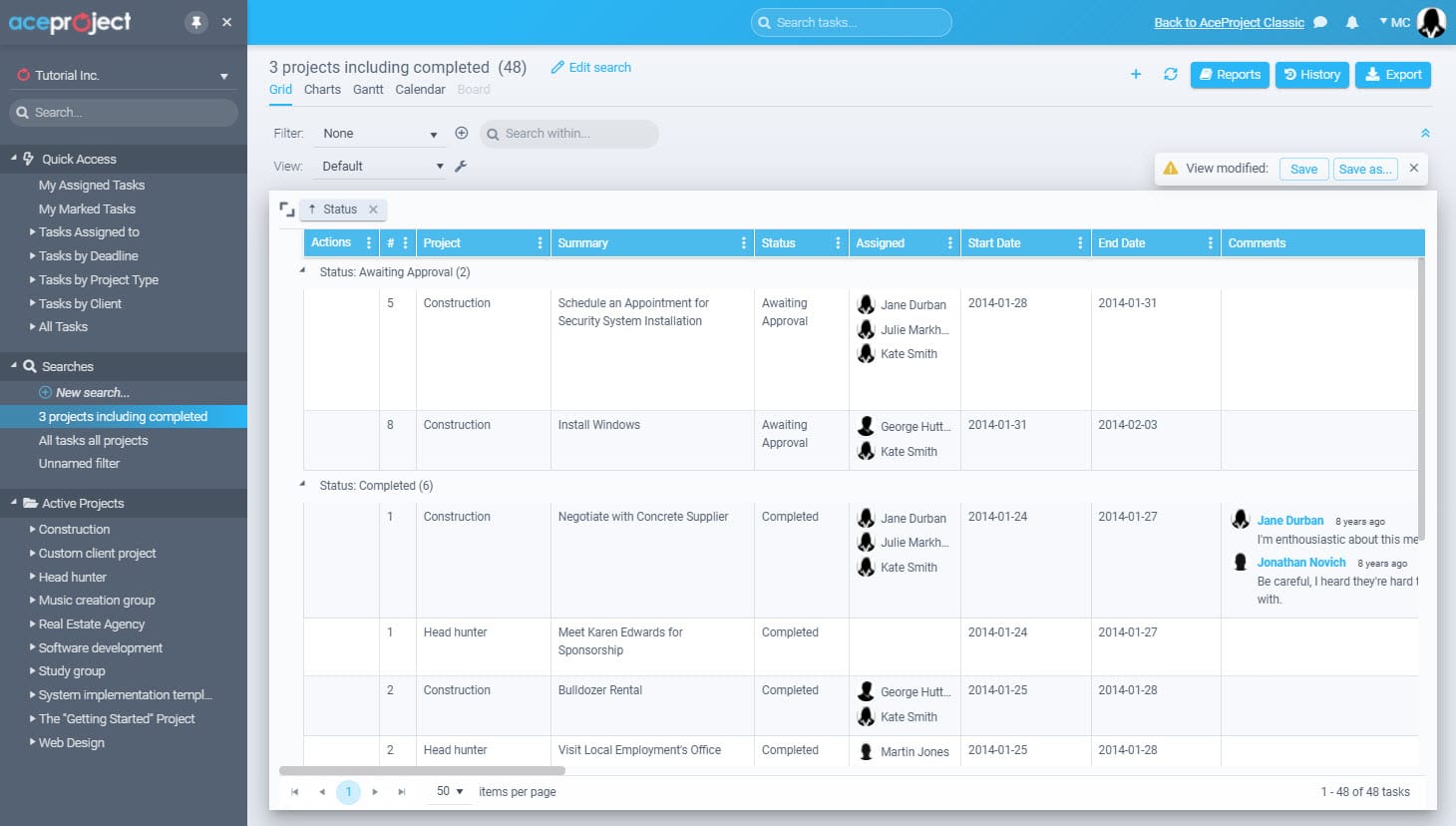
Trello is a free collaboration tool that makes it easy to manage projects and organize everything through a simple system of boards, lists, and cards. Its interactive and highly visual interface gives users a clear overview of the project workflow. This simple-to-use tool allows users to group projects and tasks, reorder them, and move them as cards across lists representing a workflow.
While Trello is a notable project management tool, it’s not the sole option. The market offers other platforms with a more decadent array of features, diverse pricing structures, and various collaboration opportunities. We have meticulously evaluated numerous Trello alternatives, examining hundreds of data points, to identify the top five choices suitable for small businesses. Each alternative is user-friendly, cost-effective, and equipped with the most crucial features for businesses and their teams.

Whenever you need an advanced reporting and exporting platform that will boost Trello’s capabilities,
consider Bridge24 for Trello.
Top 6 Best Trello Alternatives
Trello is one of the most popular project management tools in the market. Companies are willing to pay for their premium and business class packages for one reason – to access a broader range of collaboration features and functionalities for their business. However, while the free version offers many features and is fun, it can’t meet all business requirements. It lacks critical features such as multi-board reporting, subtasks & task dependencies, workload reports, export to Excel, expense tracking, cost tracking, import of Microsoft project files, time-tracking, and more. See below the list of Trello alternatives we found for you.
1. AceProject
AceProject, a versatile web-based project management tool, excels in managing projects from start to finish. Ideal for both teams and enterprises, it offers a comprehensive solution that efficiently streamlines workflows and mitigates uncertainties. This adaptable software-as-a-service caters to a variety of project needs with ease.
Features: AceProject is equipped with a wide array of project management capabilities. It features Gantt charts, sophisticated reporting tools, customizable project templates, and options for setting up recurring tasks. Time tracking is made efficient with features like time approvals, a time clock, and comprehensive time reports. Its document management system includes sharing, version control, and document-locking functionalities. Additionally, AceProject includes features for tracking expenses, such as expense approval processes and detailed expense reporting.
Pricing: AceProject offers a variety of pricing plans to suit different requirements and budget constraints. The free Basic plan supports up to 3 users, with unlimited tasks, 3 projects, and 1 GB of storage space. Several paid options are available, starting from the Standard plan at $24 per month and extending to Advanced, Silver, and Gold plans. Each plan is tailored to provide a specific number of users, project limits, and storage capacities, allowing users to upgrade or downgrade according to their changing needs.
2. Asana

Asana, a prominent project management tool, has increasingly embraced a Kanban-based view in recent years, positioning it alongside Trello.
Features and Pricing Comparison: Asana and Trello offer Kanban View, Card Owner, Deadlines, and Workflow Automation Tools. However, they differ in integrations – Trello offers 181 (Premium) while Asana has 158. Asana stands out with its advanced workflow automation and three distinct views.
Asana Pricing: Asana’s free plan caters to up to 15 users. Their premium plan begins at $10.99 per user per month.
User Experience in Asana: Asana’s “Board” view or tab closely mirrors the user experience in Trello. Users can drag and move tasks across stages or click them to view and edit details. Starting with Asana and creating, as well as assigning tasks, is straightforward.
Integrations in Asana: Asana boasts 158 native integrations, encompassing major applications like Slack, Office 365, and Salesforce.
Use Cases for Asana:
- Small teams handling complex projects with multiple task owners.
- Large teams with intricate workflows.
Is Asana Better Than Trello? Determining a clear winner between Asana and Trello is challenging due to their conceptual and use case differences. However, understanding these distinctions can guide you in choosing the right tool for your company. Explore our detailed analysis of Asana vs Trello for a more thorough comparison.

Whenever you need an advanced reporting and exporting platform that will boost Asana’s capabilities,
consider Bridge24 for Trello.
3. Basecamp
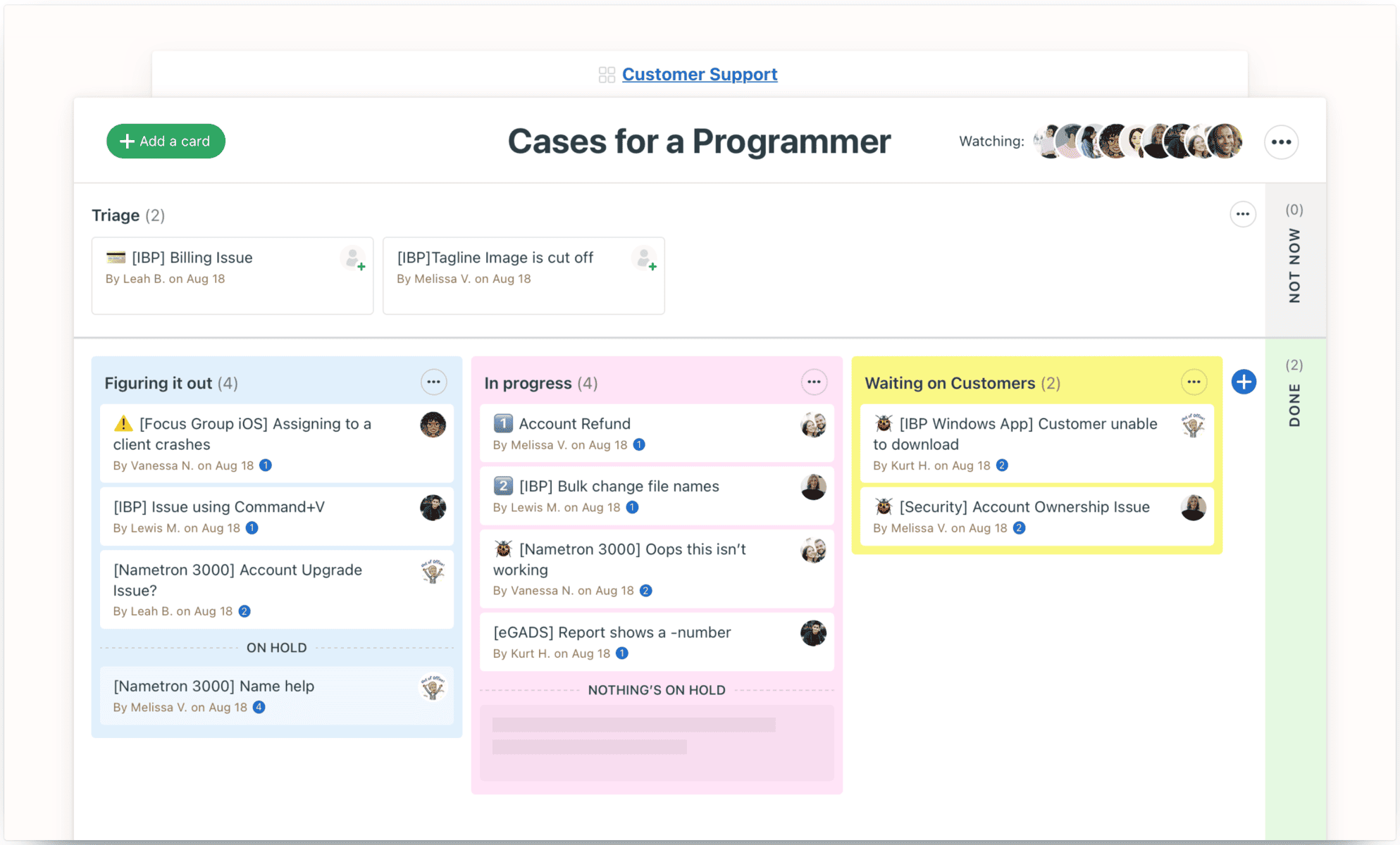
Basecamp is an effective Trello alternative for web-based project development, offering a comprehensive toolkit for collaboration and remote work. It’s designed to keep teams organized and in sync with their projects, reducing the need for frequent meetings.
Key Features of Basecamp
- Message boards to consolidate team conversations in one place.
- To-do lists to outline and track all necessary work.
- Project scheduling with specific dates and times for each task.
- Document sharing and file storage capabilities, including support for images and spreadsheets.
- Real-time group chat for quick questions and answers.
- Automatic check-ins as an alternative to status meetings.
- Hill charts to visually track project progress.
- Direct chat with colleagues through Pings.
- Email forwarding capabilities within Basecamp.
- An efficient search function for images, files, and Pings.
Advantages of Basecamp
- Organizes work effectively.
- Allows breaking up of work into separate, manageable projects.
- Each project includes all the necessary tools for team use.
- Streamlines task assignment, enhancing efficiency.
- Simplifies team onboarding, addressing common onboarding challenges.
- Centralized notifications to minimize distractions.
- Frees up time for other tasks, boosting productivity and efficiency.
Limitations of Basecamp
- Lacks the ability to add tasks with attributes in sub-groups.
- Absence of a comprehensive dashboard for managing multiple projects.
- There is no dependency tracking and occasional slow loading times.
Pricing
Basecamp offers two straightforward plans:
- Personal: Free version.
- Business: $99 per month, accommodating unlimited users.
Basecamp, focusing on streamlined project management and collaboration, is well-suited for teams seeking an efficient and organized way to handle their projects.

Whenever you need an advanced reporting and exporting platform that will boost Basecamp’s capabilities,
consider Bridge24 for Basecamp.
4. Jira
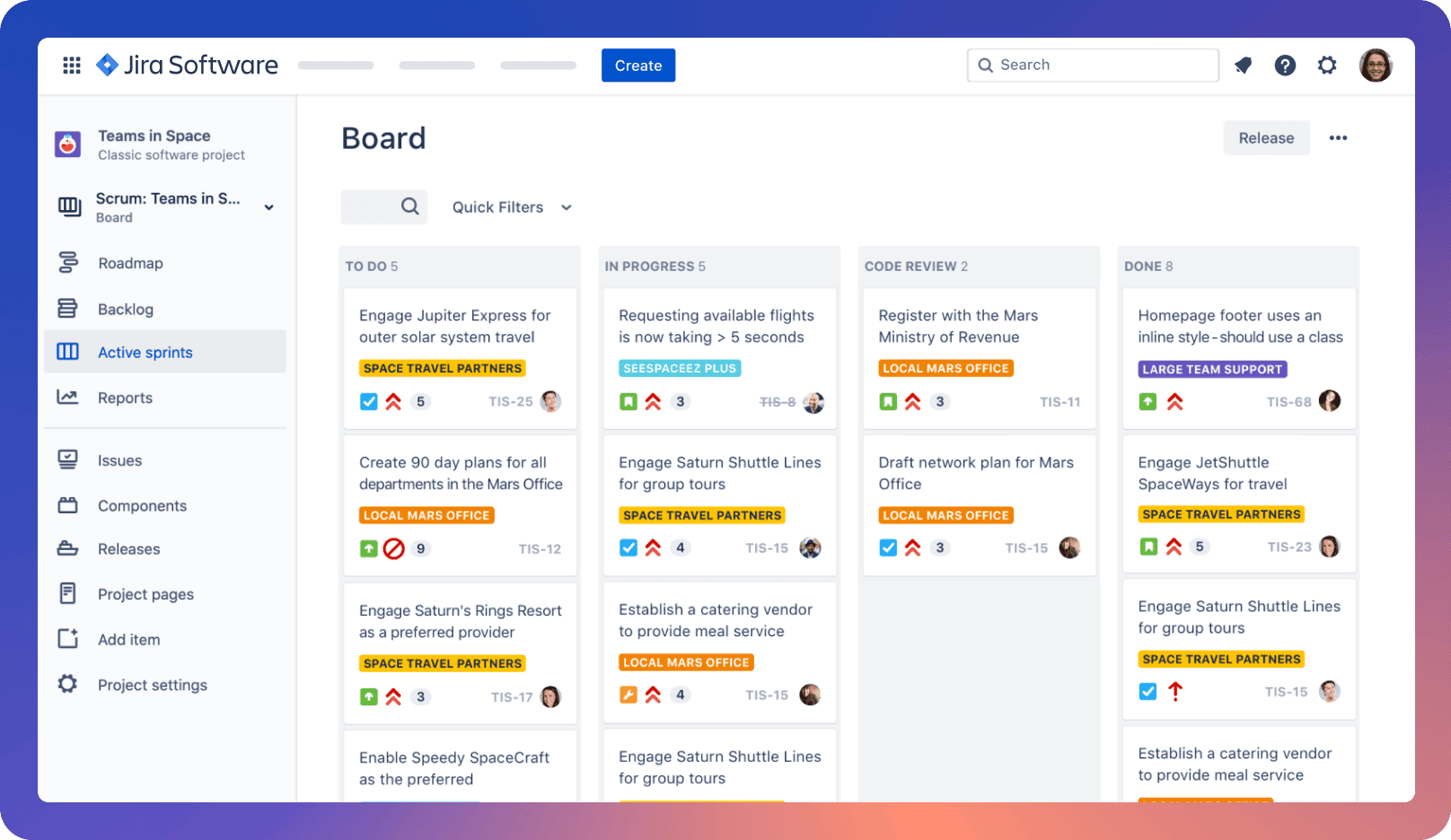
Jira, another noteworthy alternative to Trello, hails from the same parent company, Atlassian. It’s a well-established tool, precious for agile development teams and product developers, taking task management to a level beyond Trello’s capabilities.
Jira facilitates effective team coordination as a cloud-based and subscription-oriented tool, driving towards shared objectives.
Explore the Differences: Jira Vs Trello!
Jira’s Key Features:
- Scrum boards to break down complex tasks
- Workflow extensions for enhanced functionality
- Dedicated test management
- Broad product integration options
- Instant, real-time notifications
- Customizable issue templates
- Time tracking with visual color indicators
- Tools for communication and team planning
- Comprehensive reports and insights
- A variety of project-tracking templates
Advantages of Jira:
- Highly scalable and customizable to suit growing needs
- Provides flexibility in project management
- Customizable workflows for increased efficiency
- Effective for managing and tracking issues
Limitations of Jira:
- Potentially high cost
- Limited features for collaboration
- Complexity in user experience and setup
- Slower performance with lengthy query load times
Jira Pricing Plans:
- Free Plan for basic needs
- Standard Plan at $7 per user per month
- Premium Plan at $14 per user per month
5. AirTable

Airtable, a unique spreadsheet and database hybrid, offers a dynamic solution for businesses to manage teams and projects efficiently. It’s beneficial in handling customer relationship-related tasks.
Features and Comparison with Trello:
- Both Airtable and Trello offer a Kanban view and card ownership options.
- Deadline setting and workflow automation tools are available on both platforms.
- While Trello boasts 181 integrations in its premium version, Airtable offers 32 native integrations.
- Airtable uniquely combines a spreadsheet view with Kanban and Calendar views for task management.
Airtable Pricing:
- The free plan includes 1,200 rows and 5GB of storage. The Plus plan starts at $10 per user per month.
User Experience:
- Airtable’s default interface resembles a more advanced Excel or Google Sheets version.
- The Kanban view, familiar to Trello users, is intuitive and user-friendly.
- Adding new projects is straightforward, with the ability to easily click a plus sign in each column and move cards as needed.
Integrations:
- Airtable has 32 native integrations via its API and supports over 1,000 additional integrations through Zapier and other SaaS solutions.
Ideal Use Cases for Airtable:
- It is best for companies requiring robust data organization and project management capabilities.
- They are suited for users who prefer working within a spreadsheet format.
6. ProjectManager

ProjectManager.com is a versatile work and project management software that assists project managers with planning, monitoring, and reporting on every project phase. As a strong Trello alternative, it offers a variety of work views, including advanced Kanban boards and comprehensive project management and collaboration features. Tailored to suit waterfall, agile, or hybrid environments, ProjectManager outperforms Trello with its superior kanban boards.
This software is user-friendly for both beginners and experienced project managers. Users can fully leverage the tool’s capabilities regardless of their skill level or location. It provides diverse project views, catering to the specific needs of different roles.
Managing Projects with Kanban Boards:
- ProjectManager’s kanban boards visualize workflows, minimize bottlenecks, clarify assignments, and manage backlogs.
- Users can assign tasks in the Kanban view, monitor progress in real-time, and reallocate resources to prevent delays.
- Offering workflow automation and task approvals, ProjectManager streamlines processes and ensures project quality, a feature that sets it apart from Trello.
Real-Time Dashboards and Reports:
- ProjectManager features integrated reporting with its kanban boards, facilitating quick project status checks.
- The dashboard and reports are crucial for sharing data with stakeholders and making informed decisions, an area Trello lacks.
- ProjectManager’s dashboard requires no user setup, unlike many Trello alternatives.
Why ProjectManager is a Top Trello Alternative:
- Offers diverse project planning views, including Kanban boards, Gantt charts, spreadsheets, and task lists.
- Advanced resource planning and cost-tracking capabilities.
- Unlimited file storage, messaging, and file sharing.
- Free trial and mobile apps for Android and iOS are available.
Limitations:
- Less customization compared to Trello.
- Fewer third-party integrations than Trello.
- There is no free plan.
Pricing:
- Team Plan: $13.00 per user/month.
- Business Plan: $24.00 per user/month.
- Enterprise Plan: Custom quote available upon request.
ProjectManager is the best Trello alternative, especially for Mac and PC users, due to its comprehensive project planning and reporting features, including a more potent Kanban tool. Those ready to enhance their project management software experience should consider starting with ProjectManager today.
Conclusion
Exploring the Best Trello Alternatives has provided us with a comprehensive understanding of the diverse range of project management tools available in the market. Each alternative presents unique features, pricing models, and user experiences, catering to different project management needs and preferences. Whether you prioritize intuitive design, advanced customization, robust integration capabilities, or cost-effectiveness, there is an option out there that aligns with your specific requirements.
The key takeaway from this exploration is the importance of selecting a tool that not only matches the current needs of your team but also has the potential to scale and adapt as your projects evolve. By carefully considering these alternatives, teams can make an informed decision, ensuring a smoother, more efficient project management process. As the world of project management tools continues to evolve, staying knowledgeable about these alternatives can significantly impact the success and efficiency of your team’s collaboration and productivity.
Recommended articles: The Pros and Cons of using Trello Software | Trello Pricing Plans & Costs Guide
Peter Kanai is a Google-certified freelance writer with over a decade of experience crafting high-quality content for business websites, blogs, and SEO & email marketing campaigns. His on-demand writing services are all about helping businesses expand their online presence and achieve their objectives. With a proven track record in delivering results-driven content, Peter is the go-to freelance writer for business owners seeking a strategic partner to help them grow their brand online.

